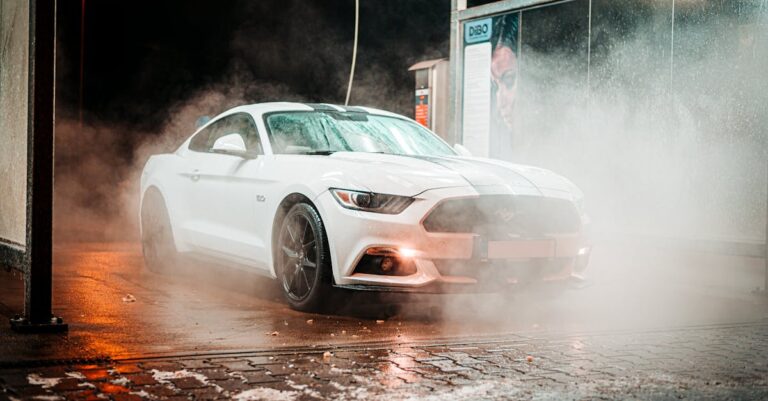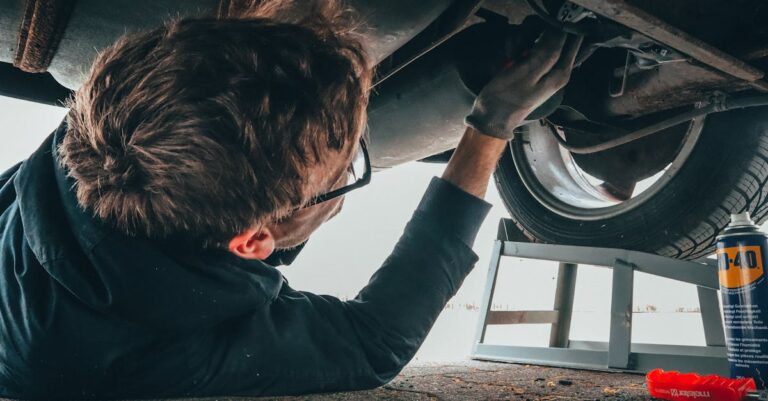Table Of Content
- What Exactly Is Ceramic Coating?
- The Unbeatable Shine: Why Ceramic Coating Wins on Looks
- Superior Protection Against the Elements
- Making Car Washing a Breeze
- Long-Term Value and Cost-Effectiveness
- Choosing the Right Ceramic Coating
- Conclusion: Is Ceramic Coating Worth It for Your Car?
- Frequently Asked Questions (FAQs)
Benefits Of Ceramic Coating For Cars
Ever wondered how some cars seem to perpetually gleam, shrugging off dirt and water like it’s nothing? Chances are, they’re sporting a secret weapon: ceramic coating. If you’re a car enthusiast or just someone who takes pride in their ride, you’ve probably heard the buzz. But what’s the real deal? Is it just expensive snake oil, or does it genuinely offer benefits that make it worth the investment? Let’s dive deep into the world of ceramic coatings and uncover why they might just be the best thing you can do for your car’s paintwork.
What Exactly Is Ceramic Coating?
Okay, first things first. Let’s demystify this term. Ceramic coating isn’t some magical force field (though sometimes it feels like it!). It’s a liquid polymer that is applied by hand to the exterior of a vehicle. The coating chemically bonds with the vehicle’s factory paint, creating a durable, semi-permanent layer of protection. Think of it less like a temporary wax and more like a second skin for your car’s paint.
Beyond Wax: The Science Simplified
For years, carnauba wax was the go-to for achieving that showroom shine and adding a bit of protection. Then came synthetic sealants, offering longer durability. Ceramic coatings, however, are a whole different ball game. They primarily use silicon dioxide (SiO2), the same stuff found in quartz and glass. When this liquid polymer cures, it forms an incredibly hard, glass-like layer over your paint. This layer is significantly harder and more resilient than traditional waxes or sealants. It’s not just sitting *on* the paint; it chemically fuses *with* it at a molecular level. This bond is what gives ceramic coatings their impressive longevity and protective qualities. It’s like upgrading from a raincoat (wax) to a custom fitted suit of armor (ceramic coating).
Nanotechnology at Work
The “nano” in nano-ceramic coating isn’t just marketing fluff. It refers to the microscopic size of the particles in the coating. These tiny particles are designed to fill in the invisible pores and imperfections present in your car’s clear coat. You might think your paint is perfectly smooth, but under a microscope, it looks more like a rugged landscape. Ceramic coating particles seep into these microscopic valleys, creating an incredibly smooth, uniform, and flat surface. This extreme smoothness is key to many of its benefits, from the intense gloss to its hydrophobic (water-repelling) nature. It’s like smoothing out sandpaper with a layer of liquid glass – the difference is truly remarkable.
The Unbeatable Shine: Why Ceramic Coating Wins on Looks
Let’s be honest, one of the biggest draws for any car care product is the shine. We all want our cars to look their absolute best, turning heads wherever they go. This is an area where ceramic coatings truly excel, offering a depth and gloss that’s hard to beat.
A Deep, Glossy Finish That Lasts
Traditional waxes can give a warm glow, but it’s often short-lived. Ceramic coatings provide something different – a hard, candy-like gloss that makes the paint look wet and incredibly reflective. Because the coating creates that ultra-smooth, leveled surface we talked about, light reflects off it much more uniformly. This results in enhanced clarity, deeper color saturation, and a mirror-like finish that can last for years, not just weeks or months like waxes. Imagine the difference between a standard definition TV and a 4K Ultra HD display – that’s the kind of visual upgrade ceramic coating can provide for your paint.
Enhancing Your Car’s Aesthetics
Beyond just shine, ceramic coating enhances the overall look of your vehicle. It makes colors pop, whether you have a vibrant red sports car or a sophisticated metallic grey sedan. Dark colors appear deeper and richer, while lighter colors gain a brilliant sparkle. This aesthetic enhancement isn’t temporary; it’s locked in by the durable coating, ensuring your car maintains that “just detailed” look for much longer. It’s like putting a high-quality clear coat over a masterpiece painting – it protects and brings out the best in the underlying artwork.
Superior Protection Against the Elements
While the shine is fantastic, the primary function of a ceramic coating is protection. Your car’s paint is constantly under assault from various environmental contaminants and harsh conditions. A ceramic coating acts as a formidable shield, safeguarding your precious paintwork.
UV Ray Defense: Preventing Paint Fade
Just like our skin, car paint suffers from prolonged exposure to the sun’s ultraviolet (UV) rays. This leads to oxidation, causing the paint to fade, dull, and eventually deteriorate. Ceramic coatings contain UV blockers that act like sunscreen for your car, significantly reducing the harmful effects of the sun. By preventing UV rays from penetrating the paint, the coating helps maintain the original color and vibrancy for years, protecting against that chalky, faded look you see on older, unprotected vehicles.
Chemical Resistance: Bird Droppings, Bug Splatter, and More
Everyday driving exposes your car to a cocktail of potentially damaging chemicals. Acid rain, bird droppings (which are highly acidic), bug guts, tree sap, road grime, and mineral deposits can all etch into your car’s clear coat if left unattended. Ceramic coatings create a chemically resistant surface. This barrier prevents these contaminants from bonding directly with the paint or etching into it as easily. While you still need to clean these things off, the coating provides a crucial window of time and makes removal much easier, preventing permanent damage.
Hydrophobic Properties: Making Water Bead and Roll Off
This is perhaps one of the most visually satisfying benefits. “Hydrophobic” literally means “water-fearing.” A ceramic coated surface has incredibly high surface tension, causing water to form tight beads rather than sheeting out flat. These beads encapsulate dirt and grime sitting on the surface and simply roll off the vehicle, taking the dirt with them. This effect is not only cool to watch but also plays a significant role in keeping the car cleaner for longer and making washing much easier.
What Does “Hydrophobic” Really Mean for Your Car?
Think of a freshly waxed car – water beads up nicely, right? Now, multiply that effect significantly and make it last for years. That’s the hydrophobic power of ceramic coating. Because the surface is so smooth and chemically repellent to water, water molecules prefer to stick to each other rather than the paint. This means less water spotting (though not complete elimination, as minerals in the water can still leave deposits if left to dry), quicker drying times after rain or washing, and a tendency for the car to shed light dirt just by driving in the rain. It’s like your car is wearing a high-tech waterproof jacket.
Making Car Washing a Breeze
If you dread the chore of washing your car, ceramic coating might just become your new best friend. Its unique properties fundamentally change the cleaning process, making it quicker, easier, and less frequent.
The Self-Cleaning Effect (Almost!)
Okay, let’s be realistic – no coating makes a car truly “self-cleaning.” However, ceramic coatings come pretty close sometimes. Remember those hydrophobic properties? As water beads and rolls off, it carries away loose dirt and dust. Furthermore, the slickness of the coated surface prevents dirt and grime from sticking as stubbornly as they would to bare paint or wax. This means your car stays cleaner between washes, and often a simple rinse is enough to remove light dust accumulation. It’s not magic, but it’s a significant reduction in how quickly your car looks dirty.
Reduced Need for Frequent, Aggressive Washing
Because dirt doesn’t bond as strongly to the coated surface, washing becomes much less labor-intensive. You won’t need harsh chemicals or aggressive scrubbing (which can introduce swirl marks) to get your car clean. A gentle wash with a pH-neutral car shampoo and a soft wash mitt is usually all it takes. The slick surface allows contaminants to slide off easily. This not only saves you time and effort but also minimizes the risk of inflicting wash-induced scratches and swirls, helping to preserve that flawless finish for longer.
Long-Term Value and Cost-Effectiveness
Yes, getting a professional ceramic coating can seem like a significant upfront cost compared to a bottle of wax. However, when you look at the bigger picture and the long-term benefits, it often proves to be a wise investment.
Durability Compared to Traditional Waxes/Sealants
This is where ceramic coatings blow traditional methods out of the water. A typical carnauba wax might last a few weeks, maybe a month or two if you’re lucky. Synthetic paint sealants might push that to six months. A professionally applied ceramic coating, on the other hand, can last anywhere from two to five years, with some high-end coatings even claiming longer lifespans with proper maintenance. When you factor in the cost and time involved in frequently reapplying wax or sealant, the long-term cost of ceramic coating becomes much more reasonable. You’re paying more upfront for years of protection and shine, rather than small amounts repeatedly for temporary results.
Protecting Your Investment and Resale Value
Your car is often one of your most significant investments after your home. Protecting its appearance is crucial for maintaining its value. A ceramic coating helps preserve the original factory paintwork in pristine condition by shielding it from environmental damage and oxidation. A car with well-maintained, glossy paint will invariably command a higher resale price than one with faded, swirled, or etched paint. Potential buyers notice the difference, and a ceramic coating signals that the car has been well cared for. It’s an investment in maintaining the asset’s value.
Choosing the Right Ceramic Coating
So, you’re sold on the benefits, but now you’re faced with choices. Not all ceramic coatings are created equal, and the application method matters significantly.
Professional Application vs. DIY Kits: What You Need to Know
You’ll find a range of ceramic coating products on the market, from professional-grade coatings applied by certified detailers to DIY kits available online or in auto parts stores.
Professional Coatings: These are typically more concentrated, durable, and offer longer-lasting protection (often measured in years). The key advantage here is the application process. Professional detailers have the training, tools (like paint thickness gauges and specialized lighting), and controlled environment necessary for meticulous paint preparation (correction, decontamination) and flawless coating application. Prep work is absolutely critical for the coating to bond correctly and look its best. While more expensive, professional application generally yields superior results and longevity, often backed by a warranty.
DIY Kits: These are more affordable and accessible. However, they often contain less potent formulas and may offer shorter durability (perhaps 6 months to a year or two). The biggest challenge with DIY kits is the application. Applying a ceramic coating requires careful preparation – the paint must be impeccably clean, decontaminated, and ideally, polished to remove any imperfections, as the coating will lock them in. Application requires precision, proper technique, and a clean environment to avoid high spots, streaks, or unevenness. While achievable for skilled enthusiasts, it’s easy to get wrong, potentially leading to subpar results or even requiring professional correction.
Ultimately, the choice depends on your budget, skill level, desired longevity, and expectations. For the best possible protection and finish, professional application is usually recommended. If you’re on a tighter budget and have detailing experience, a DIY kit could be an option, but proceed with caution and meticulous preparation.
Conclusion: Is Ceramic Coating Worth It for Your Car?
So, let’s circle back to the big question: Is ceramic coating worth the hype and the cost? For most car owners who value their vehicle’s appearance and want long-lasting protection with easier maintenance, the answer is a resounding yes. It offers a level of gloss, protection, and durability that traditional waxes and sealants simply can’t match. From shielding your paint from harmful UV rays and chemical etching to making water bead up and roll away, taking dirt with it, the benefits are tangible and impressive. Washing becomes less of a chore, and your car retains that head-turning shine for years, not weeks. While the upfront cost, especially for professional application, can be significant, viewing it as a long-term investment in preserving your car’s condition and value often makes financial sense. It’s about providing your car with the best possible defense against the daily grind, ensuring it looks fantastic for years to come. If you love your car and want to keep it looking its best with less effort, exploring ceramic coating options is definitely worthwhile.
Frequently Asked Questions (FAQs)
1. How long does ceramic coating really last?
Durability varies widely based on the specific product (professional vs. DIY), environmental conditions, how the vehicle is maintained, and the quality of the initial application. Professional-grade coatings typically last anywhere from 2 to 5 years, sometimes longer. DIY coatings usually offer protection for 6 months to 2 years. Regular, proper washing with pH-neutral soaps and avoiding abrasive cleaners helps maximize the coating’s lifespan.
2. Can ceramic coating prevent scratches and rock chips?
This is a common misconception. While ceramic coatings add a hard, protective layer that offers *some* resistance to very light swirl marks and micro-scratches (often induced during washing), they are not scratch-proof or chip-proof. They will not protect against deeper scratches, vandalism, or impacts from rocks and road debris. For significant scratch and chip protection, Paint Protection Film (PPF) is the more appropriate solution, though it can be applied over or under a ceramic coating.
3. Does ceramic coating mean I never have to wash my car again?
Absolutely not! While ceramic coatings make washing much easier and keep the car cleaner for longer due to their hydrophobic and slick properties, regular washing is still essential. Dirt, grime, and contaminants will still accumulate. The coating protects the paint underneath and makes cleaning easier, but it doesn’t eliminate the need for maintenance. Using proper washing techniques (like the two-bucket method) and pH-neutral shampoos is crucial to maintain the coating’s performance and longevity.
4. Can I apply ceramic coating myself?
Yes, DIY ceramic coating kits are available. However, success heavily depends on meticulous preparation and application technique. The paint surface must be thoroughly washed, decontaminated (clay bar, iron remover), and ideally polished to remove imperfections before application. Applying the coating requires careful leveling to avoid high spots or streaks. If you lack detailing experience or a suitable environment, professional application is often recommended for optimal results.
5. Is ceramic coating only for new cars?
No, ceramic coating can be applied to cars of any age! In fact, older cars can benefit significantly. Before applying the coating to a used car, comprehensive paint correction (polishing) is usually necessary to remove existing swirls, scratches, and oxidation. This restores the paint’s appearance before locking it in and protecting it with the ceramic coating. It can rejuvenate an older car’s finish and make it look fantastic again, while providing all the protective benefits.









